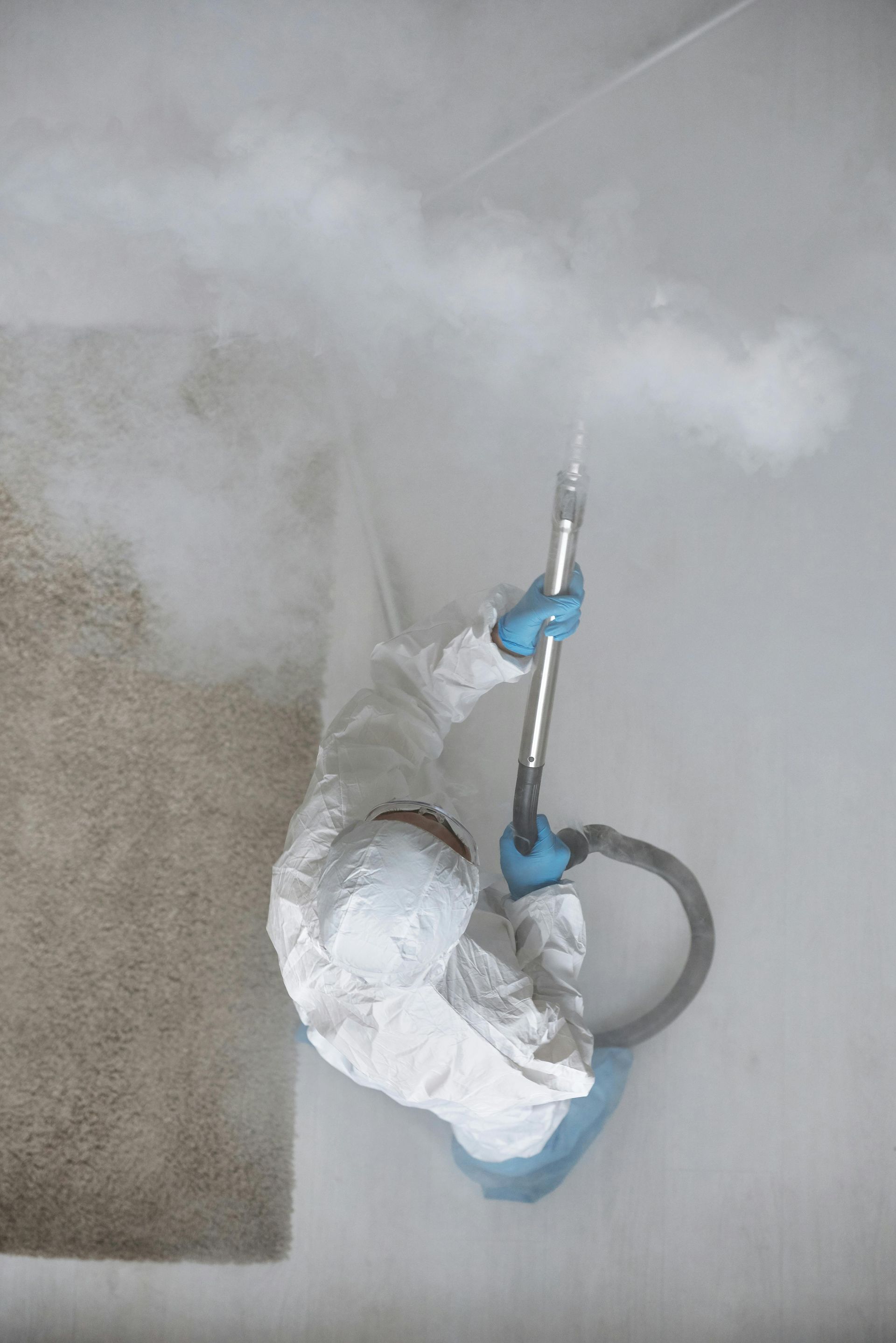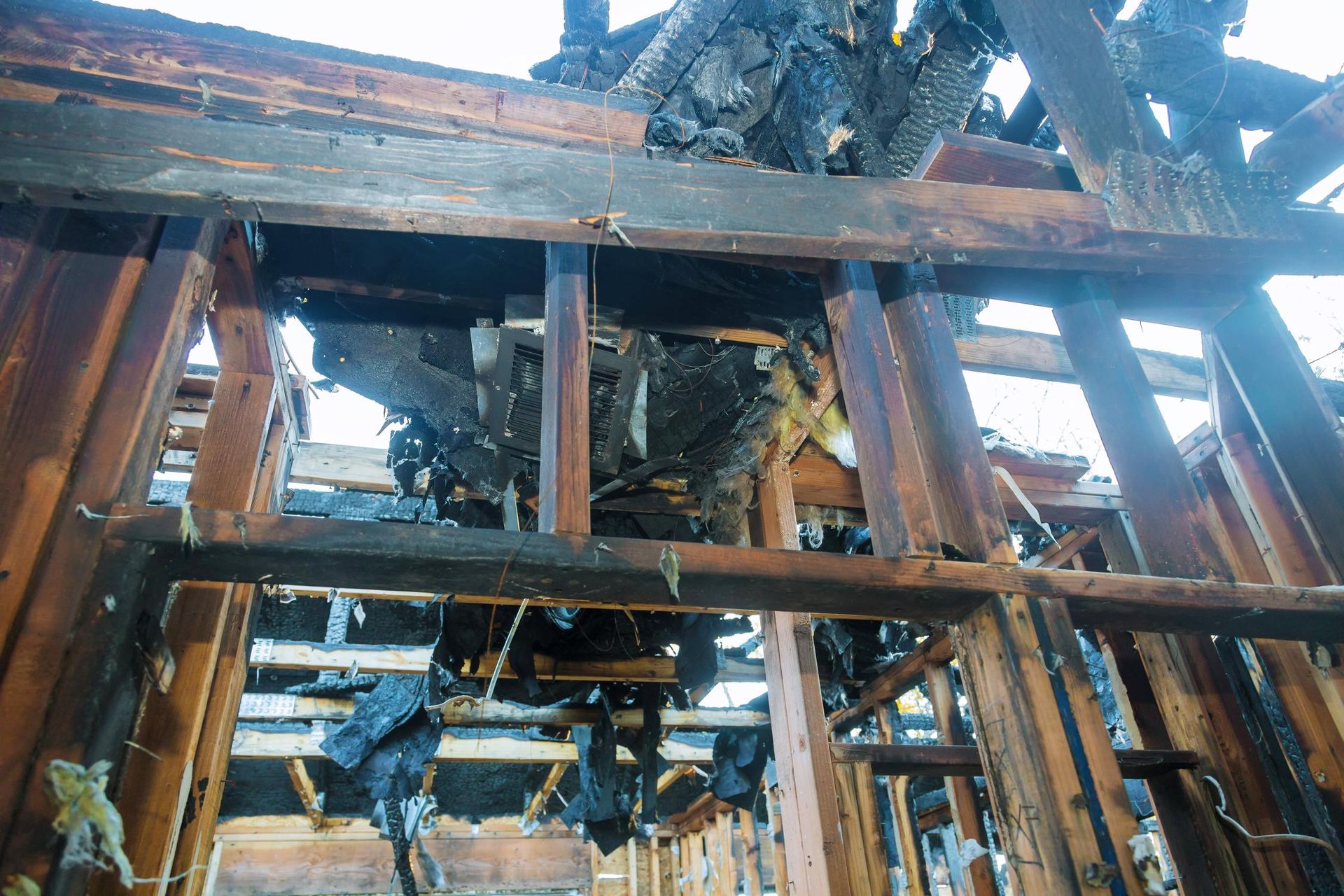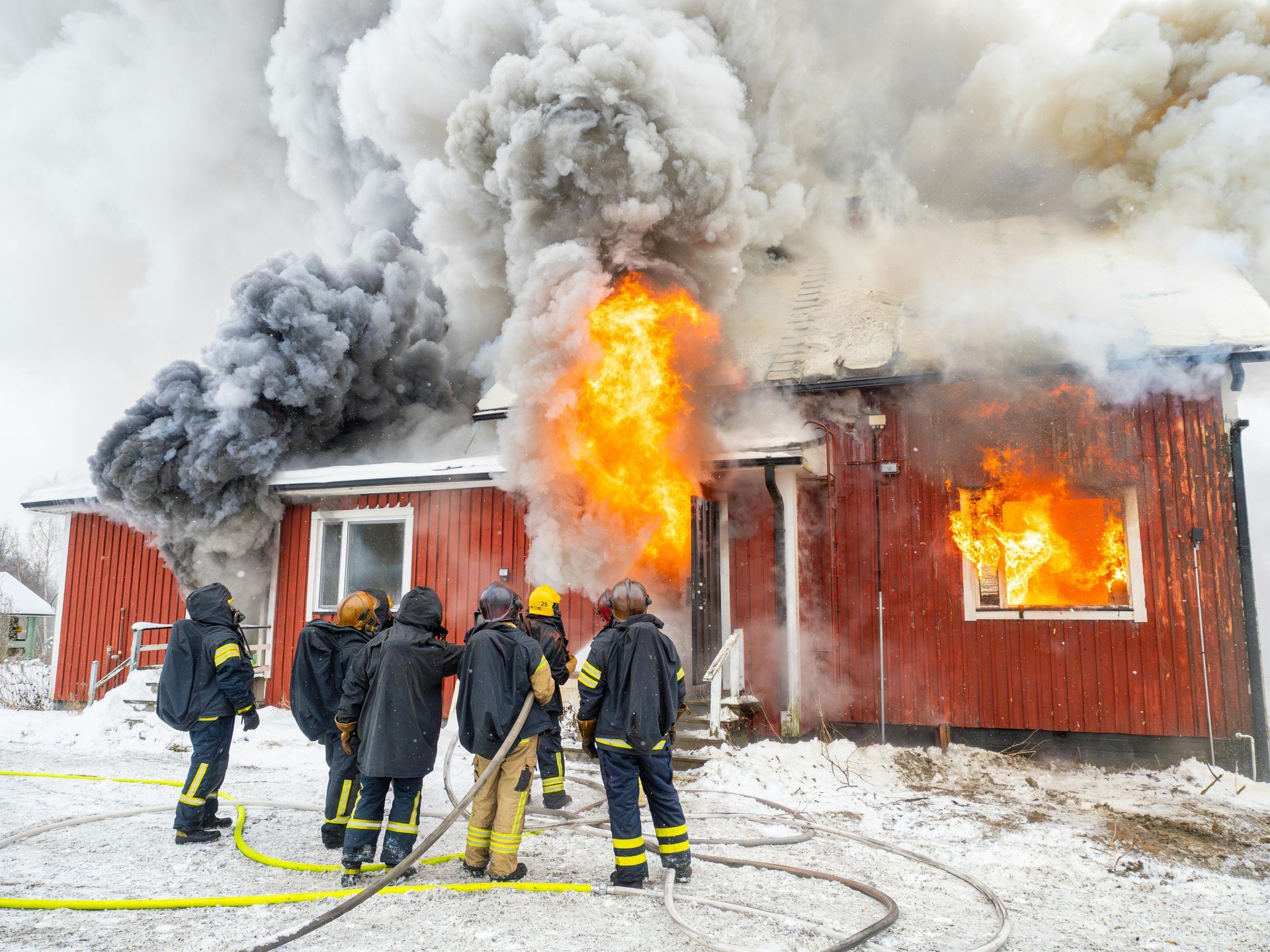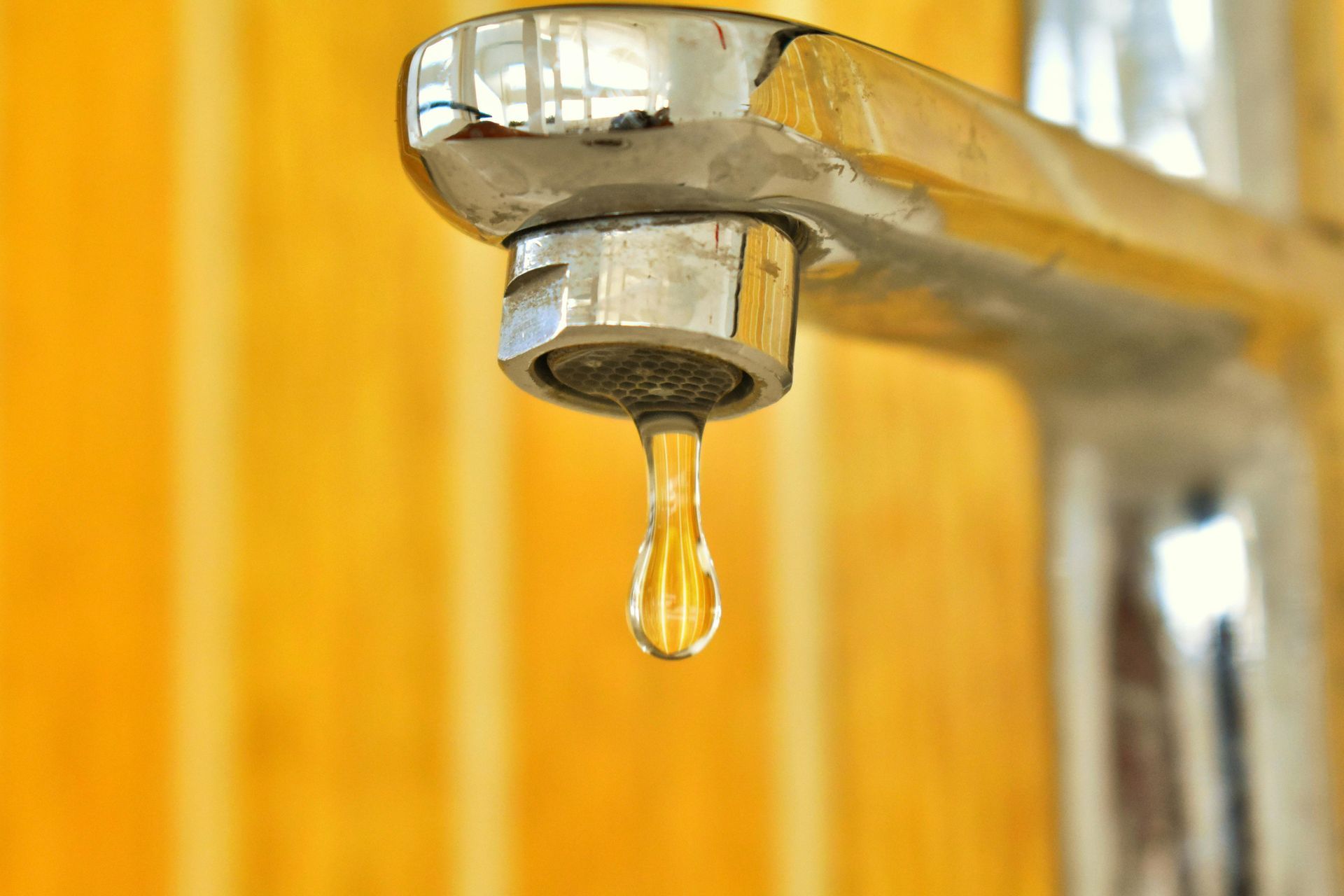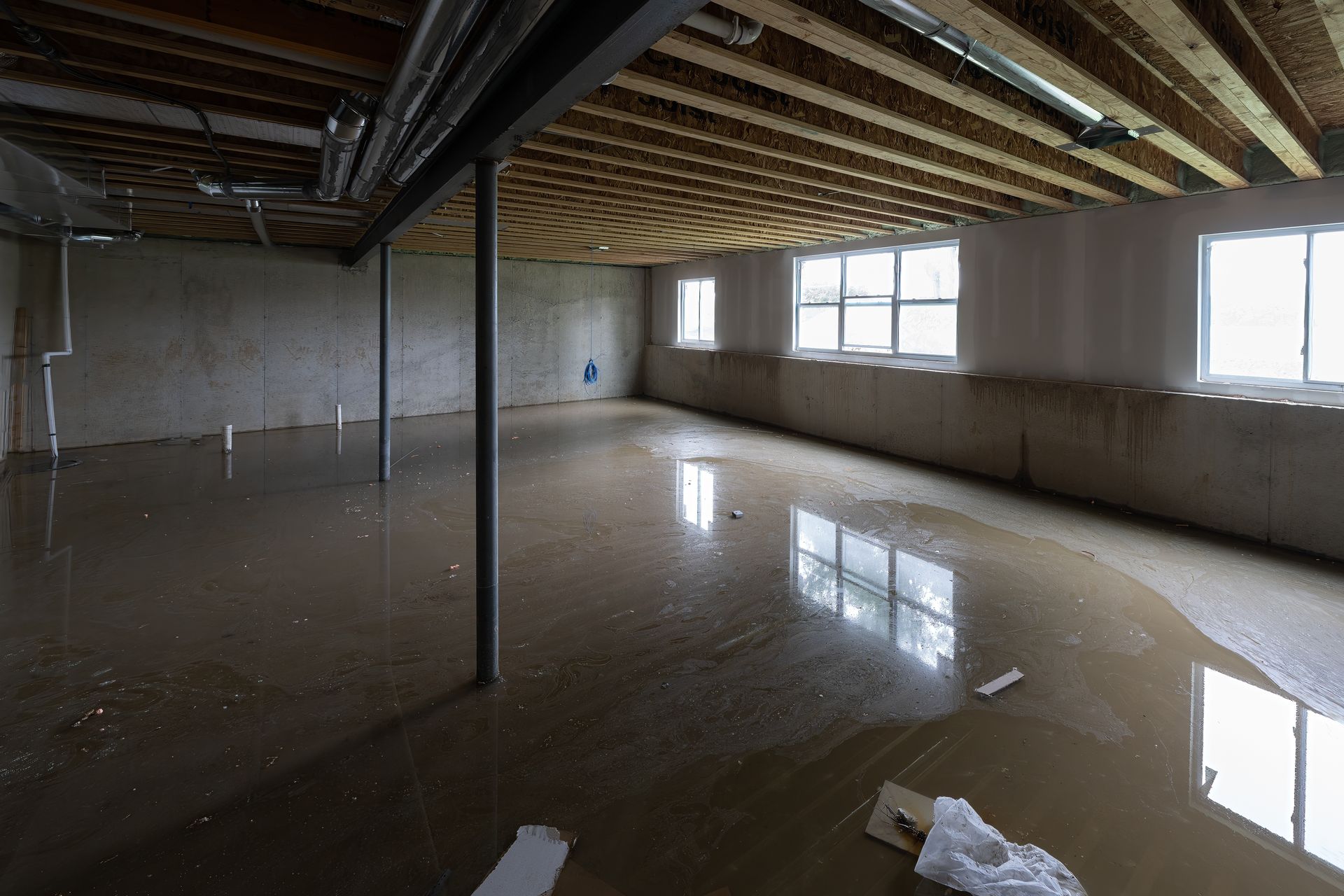Serving Athens, GA & Surrounding Areas
Call 24/7 for Emergencies
The Importance of Mold Testing in Your Home
Why a Home Mold Inspection is Essential to Keep Your Family Safe
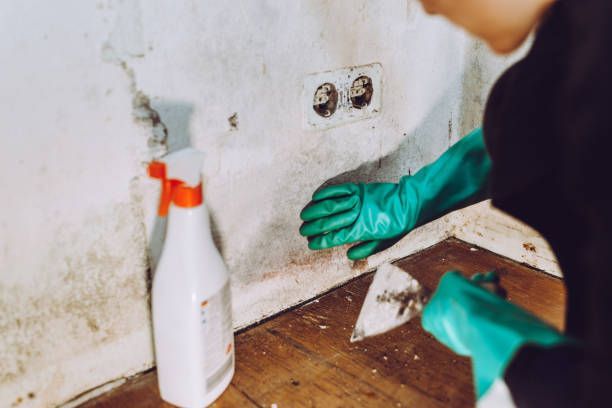
Mold testing is a crucial step in maintaining a safe and healthy living environment. This process identifies potential mold sources in your home, such as leaking pipes, damp basements, or condensation-prone areas. Leaving mold undetected can lead to serious health risks, from allergies to respiratory illnesses. In this article, we will delve into the importance of a home mold inspection, the potential health implications of untreated mold, and actionable steps to prevent mold growth. Ensuring your home is mold-free is not just about cleanliness—it's about safeguarding the well-being of those who reside within.
Common Signs of Mold
Mold growth can often be hard to detect, particularly when it grows in hidden areas. Here are some of the most common signs of mold growth:
- Musty odors: The presence of a persistent, musty smell is often the first indicator of mold growth. This scent arises from the compounds released by mold as it grows and decomposes organic material.
- Visible mold: While not all mold is visibly apparent, certain types can be observed as a black or green fuzzy or slimy substance on surfaces.
- Water damage: A history of water leaks, flooding, or other types of water damage can often lead to mold growth. Look for signs of water staining, discoloration, or peeling paint.
- Increased humidity: Mold thrives in humid conditions. If a room or area in your home consistently has high humidity levels, it is susceptible to mold growth.
- Condensation: Areas with condensation, such as windows, pipes, and walls, provide an ideal environment for mold.
Importantly, mold can also grow in hidden places, such as behind walls, under flooring, or in HVAC systems, making it particularly crucial to carry out comprehensive mold testing. Ignoring these signs or failing to test for hidden mold can lead to unnecessary exposure, potentially culminating in serious health issues.
Types of Mold
Different types of mold can be found in homes, each posing unique health risks and damages. Some of the most common types include:
- Alternaria - This type of indoor mold is often associated with allergic reactions, including asthma and hay fever. It can cause damage to furnishings and can degrade structural integrity over time.
- Aspergillus - Commonly found in heating, ventilation, and air conditioning systems, Aspergillus can cause respiratory infections and allergic reactions. Prolonged exposure can lead to chronic health issues.
- Cladosporium - This mold type can cause allergic reactions and respiratory issues. It is known to grow on painted surfaces and behind wallpaper, causing material damage.
- Penicillium - Frequently found in water-damaged buildings, Penicillium can cause infections and allergies. It can also result in material damage, including moldy furniture and crumbling plaster.
- Stachybotrys - Also known as "black mold", Stachybotrys produces toxic compounds called mycotoxins that can cause serious health issues such as breathing difficulties, memory loss, and severe allergic reactions.
- Fusarium - This type of mold can grow at low temperatures and can cause serious health problems, including skin infections and pneumonia. It can also cause damage to house plants and can infiltrate carpets and fabrics.
- Trichoderma - Though this mold is not typically dangerous to healthy people, it can produce mycotoxins that can be harmful to those with compromised immune systems. Trichoderma can cause severe damage to building materials, as it produces an enzyme that destroys wood and textiles.
Health Risks Associated with Mold Exposure
Exposure to mold-related mycotoxins can lead to serious health implications. Allergic reactions including sneezing, runny nose, red eyes, and skin rash are common in individuals sensitive to molds. Asthma attacks can be triggered in those with the condition, and even in healthy individuals, constant exposure to mold can cause upper respiratory symptoms. Severe neurological symptoms like memory loss and mood changes have been linked to prolonged mold exposure. According to a study by the Institute of Medicine, there is substantial evidence linking indoor exposure to mold with upper respiratory tract symptoms in otherwise healthy individuals, and an increased risk of symptoms in people with asthma.
Allergic Reactions
Mold exposure can trigger allergic reactions in sensitive individuals, presenting symptoms such as sneezing, a runny nose, and itchy eyes. Allergenic molds produce substances known as allergens, which the immune system identifies as foreign and potentially harmful. In response, it produces antibodies that result in allergic symptoms. Certain types of mold, such as Alternaria, Cladosporium, and Penicillium, are especially known for their allergenic properties. For example, Alternaria, a common outdoor mold, can cause symptoms ranging from itchy eyes to asthma attacks. Cladosporium, typically found on painted surfaces and behind wallpapers, can induce respiratory issues along with allergic reactions. Penicillium, often present in water-damaged buildings, is another source of mold allergies. Therefore, routine mold inspections are vital to prevent these health complications.
Respiratory Problems
Continuous exposure to mold can adversely affect the respiratory system, leading to symptoms such as coughing, wheezing, and shortness of breath. Mold spores, when inhaled, can irritate the airways and trigger inflammation, causing these respiratory problems. For instance, Aspergillus, a common indoor mold, is known to cause respiratory infections and conditions like aspergillosis. Similarly, the mycotoxins produced by Stachybotrys, or "black mold", can induce severe respiratory conditions. Other common respiratory irritants include dust, pet dander, pollen, and certain chemicals, which, when combined with mold exposure, can exacerbate respiratory symptoms. Hence, maintaining a mold-free environment is critical for respiratory health.
Headaches and Fatigue
Exposure to mold can manifest in various neurological symptoms including headaches and fatigue. These symptoms occur when the body's immune system responds to mold spores by releasing inflammatory substances, which can lead to prolonged fatigue and persistent headaches. For instance, exposure to Stachybotrys, commonly known as "black mold", can result in headaches due to the mycotoxins it produces. Likewise, Aspergillus can cause chronic fatigue in some individuals due to the immune system's constant battle against spores. Consequently, these health impacts underscore the importance of maintaining a mold-free living environment. Regular home inspections and prompt remediation of any detected mold infestations can effectively reduce these risks.
Skin Irritation
Skin irritations and rashes are other common health complications resulting from mold exposure. Certain molds, such as Fusarium and Trichoderma, can cause infections on skin and mucous membranes. For instance, Fusarium has been associated with skin infections and can even cause systemic infections in individuals with compromised immune systems. Trichoderma, while generally not harmful to healthy individuals, can cause issues in those with weakened immune systems, including skin infections. Additionally, exposure to mold spores can cause allergic reactions in sensitive individuals, resulting in hives, itching, and rash. These skin reactions are typically the result of the immune system's response to allergenic substances produced by molds. Thus, maintaining a mold-free environment is pivotal to ensuring healthy skin.
Fungal Infections
Fungal infections can occur due to prolonged exposure to certain types of mold, particularly in individuals with compromised immune systems. These infections can range from superficial skin conditions to systemic infections, affecting multiple organs. Aspergillus, a common indoor mold, is known for causing aspergillosis, a group of diseases often affecting the respiratory system. Fungal infections can also be caused by Fusarium, which can grow at low temperatures and is often found on decaying organic matter. Trichoderma, despite being generally harmless to healthy individuals, can cause infections in immunocompromised persons. Thus, maintaining a mold-free environment is key to minimizing the risk of fungal infections, especially for those with weakened immune systems.
Neurological Symptoms
Prolonged mold exposure can lead to neurological symptoms, including memory loss and mood changes. Mycotoxins released by molds such as Stachybotrys ("black mold") and Aspergillus can interfere with neural functioning. For instance, a study by the Environmental Health Center-Dallas revealed a connection between mold exposure and neurological symptoms. The study found that 93% of chronic sinusitis patients exposed to mold showed abnormal brain electrical activity, with symptoms such as memory loss and mood changes. Another research by the University of Texas found that exposure to black mold mycotoxins can cause neurotoxicity, leading to cognitive impairment. Therefore, it's pivotal to control mold growth to preserve neurological health.
Immunological Reactions
Mold exposure can prompt immunological reactions in some individuals, presenting symptoms such as fever and breathing difficulties. Certain molds, like Aspergillus and Stachybotrys, release mycotoxins that can trigger an immune response. For instance, the immune system may try to counteract these foreign substances by releasing inflammatory cytokines, resulting in fever. Also, inhalation of mold spores can cause the immune system to react, leading to respiratory distress. Moreover, persistent exposure to these molds can stimulate a hyperactive immune response, leading to chronic inflammation and potentially autoimmune disorders. Therefore, controlling mold exposure is crucial for maintaining immune health, particularly for those with already compromised immune systems.
Toxicity From Mycotoxins
Mycotoxins are toxic compounds produced by certain types of mold as secondary metabolites. Exposure to these toxins can lead to a condition known as mycotoxicosis, which can manifest in a variety of health symptoms. For instance, Stachybotrys chartarum, commonly known as "black mold", produces a mycotoxin called Stachybotrysatra, known to cause respiratory issues, dermatitis, and even cognitive impairment. Similarly, Aspergillus produces a potent mycotoxin called Aflatoxin that has been associated with liver damage and cancer. Another mold, Fusarium, produces several types of mycotoxins, including Fumonisins and Zearalenone, which can cause gastrointestinal disturbances and hormonal imbalances. Therefore, avoiding exposure to these molds is critical for preventing mycotoxin-related health complications.
Sudden Infant Death Syndrome (SIDS)
While the exact cause of
Sudden Infant Death Syndrome (SIDS) remains unclear, research indicates a potential link to indoor air pollutants, including mold. A 2004 study in the Archives of Environmental Health noted a statistical association between SIDS and the presence of fungi, particularly Aspergillus and Penicillium, in the infant's environment. These molds can release mycotoxins that may affect an infant's immature immune and respiratory systems. Chronic exposure can lead to respiratory distress, potentially increasing the risk of SIDS. Additionally, a 2016 study in Environmental Health Perspectives found that infants living in homes with high airborne mold concentrations had an increased risk of respiratory illness, a potential SIDS risk factor. Therefore, maintaining a mold-free environment is key in mitigating potential risks associated with SIDS.
The Mold Testing Process
The mold testing process is a comprehensive procedure that detects the presence, type, and concentration of mold in a building. This process begins with the collection of samples, usually conducted by professionals, as it requires precision and understanding. Samples are collected in two primary ways: through air sampling and surface sampling.
Air samples are taken using a device that traps mold spores from the air onto a slide or into a liquid medium, while surface samples are gathered through swabbing, tape lifts, or other methods, depending on the surface in question. These samples are then sent to a laboratory, where they are analyzed under a microscope to identify the types and concentration of mold present.
The test results are complex and should be interpreted by trained professionals to ensure accurate understanding. These reports provide valuable insight into the types of mold present, their concentration levels, and potential health risks. Interpretation of these results allows for the creation of an effective mold remediation plan.
Professional mold testing is an essential step in addressing mold-related issues within a building. It not only identifies the mold type and quantity but also assists in formulating a comprehensive strategy to eliminate the mold and prevent future growth.
Preventing Mold Growth
Prevention of mold growth is paramount to maintain a safe and healthy indoor environment. Mold thrives in moisture-rich environments, so managing and reducing moisture is key. This includes promptly addressing water leaks, drying wet areas immediately, and using dehumidifiers in particularly damp areas of the home, such as basements. Effective water damage restoration can also hamper mold growth.
Ventilation plays a crucial role in mold prevention, improving air circulation and reducing moisture levels. Adequate ventilation in high-moisture areas like bathrooms, kitchens, and laundry rooms is essential. Using exhaust fans, opening windows, and ensuring clothes dryers vent outside can all contribute to improved ventilation.
Maintaining balanced indoor humidity levels is another crucial factor in mold prevention. The Environmental Protection Agency (EPA) recommends keeping indoor humidity levels below 60%, ideally between 30% and 50%. A simple hygrometer can measure indoor humidity and help monitor these levels.
Preventing mold growth is a critical aspect of home maintenance. It not only helps in maintaining a healthy living environment but also safeguards the structural integrity of the home. A proactive approach including moisture control, effective ventilation, and humidity regulation can significantly lower the risk of mold infestation.
Protect Your Home With North Eastern Restoration
North Eastern Restoration provides superior mold remediation and prevention services. Our team of experts employs advanced techniques and equipment to accurately identify and effectively eliminate mold, safeguarding your home and health. We offer comprehensive solutions tailored to your specific needs, from
professional mold testing to remediation and prevention strategies. Our commitment to quality service and customer satisfaction sets us apart. Don't let mold compromise your indoor environment or your health. Trust North Eastern Restoration, your reliable mold inspectors in mold management. Contact us today for a free consultation and let us help you ensure a safe, mold-free home.
CONTACT US 24/7 FOR ANY WATER, FIRE, MOLD RELATED EMERGENCY
OR CALL US 24/7
Northeastern Restoration offers professional 24/7 emergency water, fire, and mold damage restoration services in Athens, GA, Gwinnett County, and Jackson County. Our IICRC certification ensures high-quality restoration. With a rapid 45-minute response time, we are committed to restoring your property quickly and effectively.
IICRC Certified
OUR SERVICES
CONTACT INFORMATION
Northeastern Restoration
217 Monte Ln, Jefferson, GA 30549, United States of America
All Rights Reserved | Northeast Restoration


